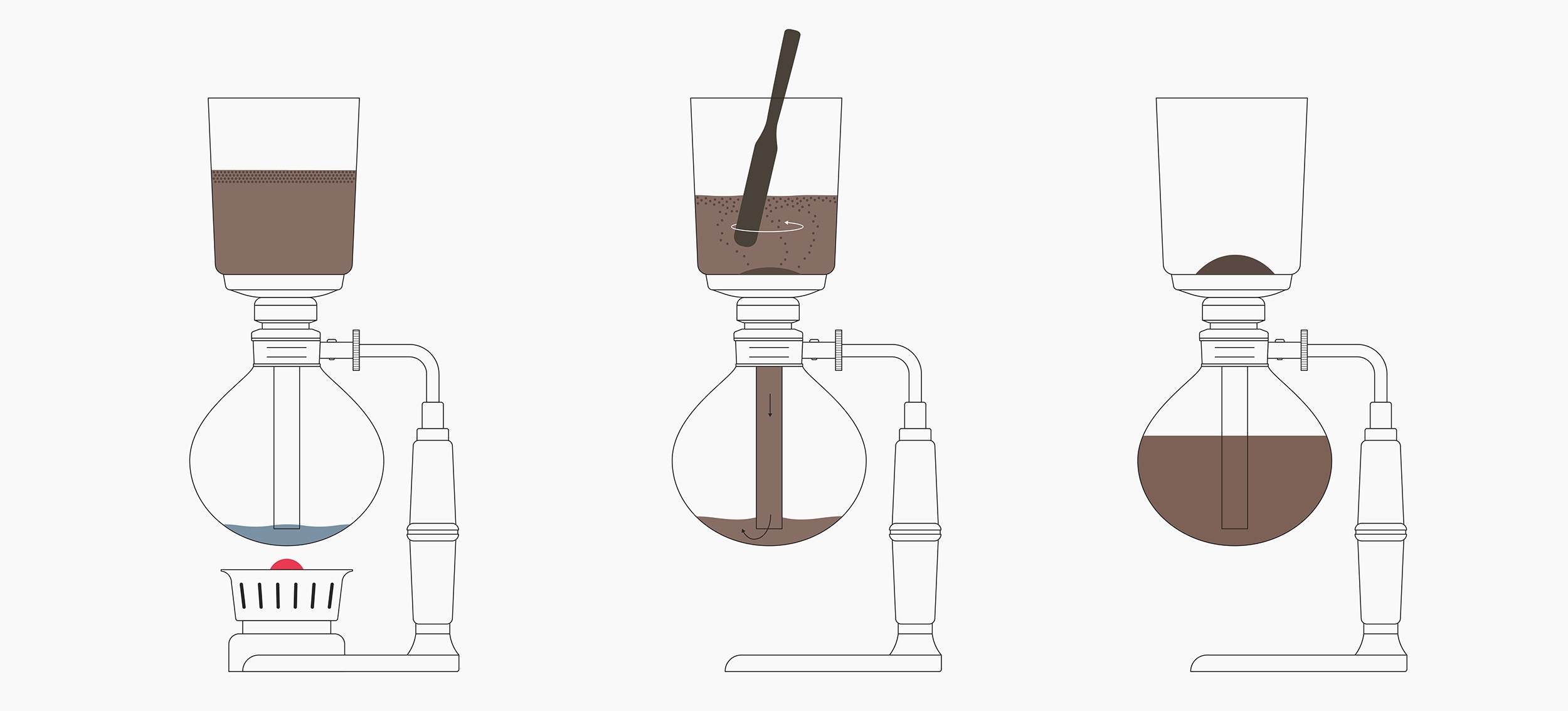3. Does Making a Whirlpool at the End Increase or Decrease Extraction?
In his book, Everything But Espresso, Scott Rao advocated the practice of stirring your Syphon slurry into a whirlpool after you turn the heat source off and thereby initiate the drawdown phase. Scott’s theory was that this would help produce equidistant paths for water to travel through over the top of the filter.
Giving the slurry a gentle circular-stir at the beginning of the drawdown creates a whirlpool effect that helps the grinds settle in a dome shape on top of the filter.
To test this theory, we prepared two sets of Syphon brews; with, and without a whirlpool. The brews with the most even extraction and least amount of channelling should be those with the highest TDS readings.
In general, creating a whirlpool seems to help with the consistency between brews. Some of the brews we prepared with no whirlpool had a similar TDS and a similar taste to those we prepared with a whirlpool. As Gwilym Davies explains, ‘I enjoyed the taste of non-whirlpool Syphon 13 more than whirlpool Syphon 12, which had the same TDS. This was, however, not repeatable. We noticed obvious channelling holes in some of the brews prepared without a whirlpool; this occurred most notably with Syphon 16.’
The finer the grind, the more aggressive the whirlpool action must be in order to achieve an evenly shaped mound. The whirlpool at the end of ultrafine-grind Syphon 16 failed to create a mound and appeared to have a hole in it, which was presumably caused by a channel. We applied more aggressive whirlpool action with Syphon 17, which produced a higher extraction yield even though it remained on the heat slightly longer and experienced less evaporation.
Because the temperature probes made it difficult to create a whirlpool swirl, we removed them for the second day of syphon-making, for syphons 10 through 15. We also removed the probes for tapping the crust during the first minute.
